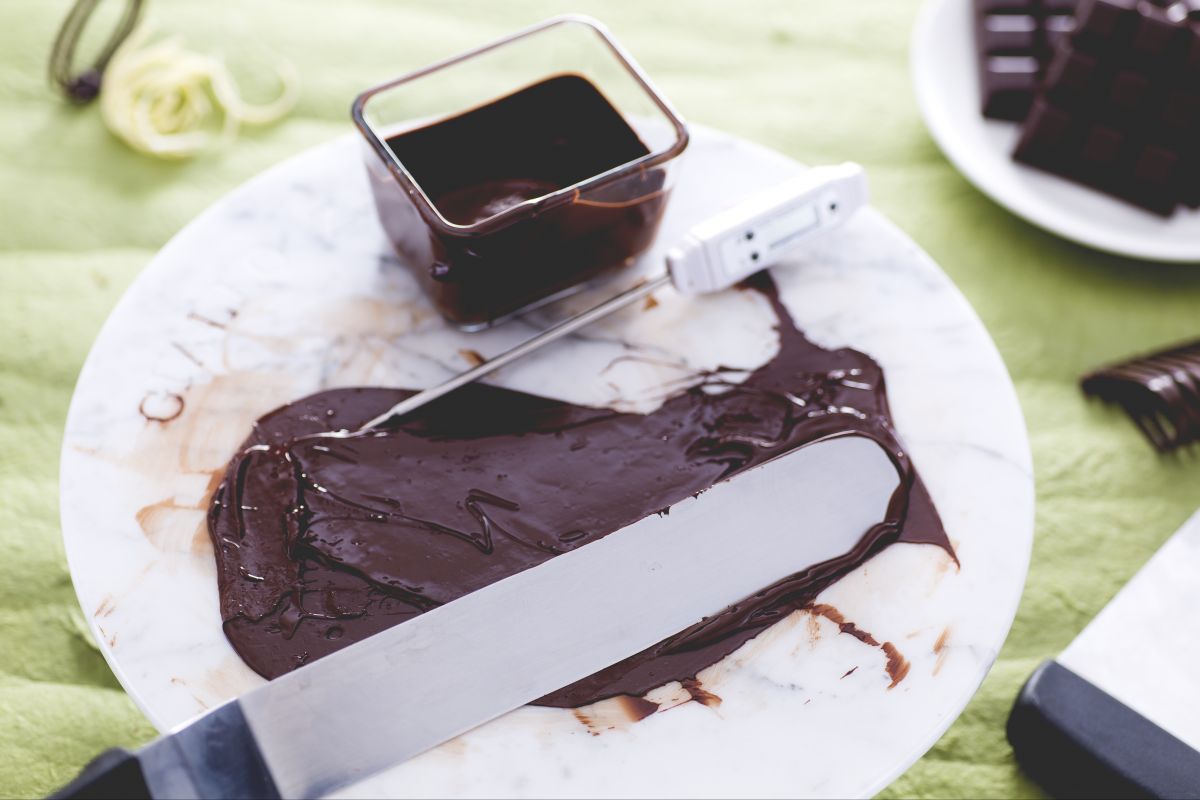Triple Chocolate Cheesecake
- Average
- 60 min
- Kcal 589

Tempering chocolate is kind of like turning your kitchen into a mini chocolate factory. Seriously, the goal? It’s all about getting that glossy finish and that super satisfying snap—making your chocolate look and taste like the pros, no question. Whether you’re going with a marble slab for that classic feel or using a thermometer to nail the temperature, mastering those chocolate tempering techniques is key. And look, if you’re into crafting filled chocolates or shiny holiday treats, this method will keep everything smooth, shiny, and free from those annoying gray streaks. With good chocolate tempering, you get that tender look and perfect break every time. Plus, the fun part? You get to turn regular chocolate into something special with a bit of patience.
Really, understanding how to temper chocolate is crucial whether you’re dealing with dark chocolate, milk, or white. The seeding method—where you add chopped chocolate to cool the mix—is a game changer for that smooth and glossy finish. Keeping an eye on those temperatures is essential—go too hot or too cold, and you lose that perfect snap. I mean, it might take some practice, but it's so, so satisfying when your chocolate turns out as good as the store-bought stuff. And listen, friends and family will definitely notice that crispy, even shine on your homemade treats. And there’s something really, really great about achieving it all by yourself. With a bit of focus and a willingness to try, anyone can nail these chocolate tempering techniques and whip up desserts that not only look amazing but taste incredible too. Next time you want a professional touch to your desserts, diving into tempering is the way to go—pretty much. Master the art of tempering, and watch your chocolate-making skills reach new heights.

To temper milk chocolate, chop it 1, then melt the milk chocolate in a double boiler (it is preferable that the water in the saucepan does not touch the bottom of the bowl containing the chocolate; it is important that water does not get into the chocolate during the double boiler cooking); when the chocolate reaches a temperature of 113-122°F (measure with a kitchen thermometer) 2, pour 2/3 of it onto the marble slab placed on a worktop 3

and start spreading the chocolate on the marble slab with a spatula 4 and a scraper 5, spreading it over the surface. When it reaches 81°F, transfer it to the bowl where you left the remaining 1/3 and mix. The chocolate should reach 84°F 6. If the temperature drops too much at this stage, always keep the double boiler with hot water on hand to slightly warm the chocolate. Conversely, if it's still too hot, repeat the spreading process on marble with a small part of the chocolate.

To temper dark chocolate, chop the chocolate 1, then melt it in a double boiler (it is preferable that the water in the saucepan does not touch the bottom of the bowl containing the chocolate; it is crucial that the boiling water does not come into contact with the chocolate); when the chocolate reaches a temperature of 129°F (measure with a kitchen thermometer) 2, pour 2/3 of it onto the marble slab placed on a worktop 3

and start spreading the chocolate on the marble slab, with a spatula 4 and a scraper 5, spreading it over the surface 2. When it reaches 82°F (always measure with a kitchen thermometer) 3, transfer it to the bowl where you left the remaining 1/3 of the chocolate and mix 6: the chocolate should reach 88-90°F. If the temperature drops too much at this stage, always keep the double boiler with hot water on hand to slightly warm the chocolate. Conversely, if it's still too hot, repeat the spreading process on marble with a small part of the chocolate.

To temper white chocolate, chop it 1 and melt it in a double boiler (2-3), remembering that it is preferable that the water in the saucepan does not touch the bottom of the bowl containing the chocolate; moreover, the water should not come into contact with the chocolate. White chocolate should reach a temperature of 113°F (measure with a kitchen thermometer);

then transfer 2/3 of the chocolate onto the marble surface and start spreading and smoothing it with a spatula and a scraper 9. The chocolate should reach a temperature of 79-81°F 5. Then, pour it into the bowl where you had left the remaining 1/3 of the melted chocolate and mix it to melt; measure the temperature which should be 81-82°F 6. If the temperature drops too much at this stage, always keep the double boiler with hot water on hand to slightly warm the chocolate. Conversely, if it's still too hot, repeat the spreading process on marble with a small part of the chocolate.